Established for over 25 years
Clinics Nationwide
5 Star Google & Trustpilot Reviews
Eyebrow Hair Loss Demystified: Uncovering Causes and Pursuing Solutions
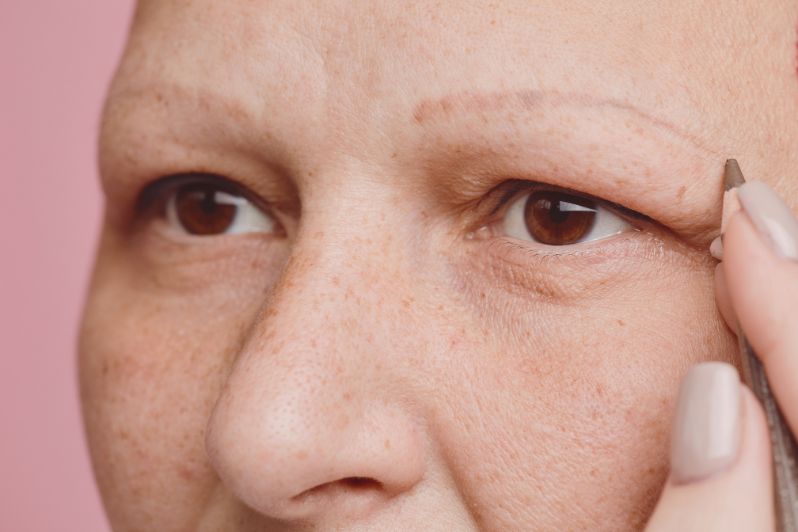
Reading time: 9 min
Eyebrow hair loss is a common concern that many individuals grapple with. It’s not just a cosmetic issue; it can also significantly impact self-esteem and confidence. But here’s the good news: understanding the causes and effective solutions for eyebrow hair loss can help you take control and restore your brows to their former glory.
In the journey of understanding eyebrow hair loss, it’s essential to explore the myriad of factors that can contribute to this issue. From autoimmune disorders and hormonal imbalances to certain medications, treatments, and even nutritional deficiencies, there’s a wide range of potential culprits. Let’s dive deep into the causes, identifying the triggers, and then explore the effective solutions available.
Key Takeaways
- Common causes of eyebrow hair loss include autoimmune disorders, hormonal imbalances and medications/treatments.
- Nutrients such as vitamins A, D & Biotin. Minerals zinc & iron are essential for healthy hair growth.
- Treatment options range from topical treatments to eyebrow micropigmentation and natural remedies to enhance the look of thinning eyebrows while waiting for regrowth.
Table of Content
Eyebrow hair loss or thinning, medically known as madarosis, is often observed in individuals in their 40s and can be triggered by various factors. The primary causes include autoimmune disorders, hormonal imbalances, and certain medications or treatments. Lifestyle choices and activities, such as over-plucking or pulling at eyebrow hairs, can also contribute to eyebrow thinning and patchiness.
While these factors may seem diverse, they all have one thing in common: they disrupt the normal hair growth cycle and affect the health of the hair follicles, leading to hair loss. A closer examination of these causes will enhance our comprehension of eyebrow hair loss and possible combat strategies.
Autoimmune Disorders
Autoimmune disorders like alopecia areata and frontal fibrosing alopecia are among the leading causes of eyebrow hair loss. In such conditions, the body’s immune system mistakenly attacks its own cells, specifically, the hair follicles, resulting in hair loss. This attack disrupts the normal hair growth cycle, leading to patchy hair loss on both eyebrows, itchiness, and sometimes dry skin.
Alopecia areata is typically associated with patchy hair loss, though other forms like alopecia totalis and alopecia universalis can result in total loss of scalp and body hair, eyebrows included. The triggers of these conditions are not thoroughly understood yet, but stress, illness, or hormones are often implicated.
Hormonal Imbalances
Hormonal imbalances can have a significant impact on hair growth, including eyebrows. One prevalent hormonal imbalance leading to eyebrow hair loss is thyroid disease. An overactive thyroid, which produces too much thyroid hormone, or an underactive thyroid can result in the shedding of eyebrow hair. This hair loss is usually temporary, and the normal fullness of the eyebrows should be restored once thyroid hormone levels are balanced.
Pregnancy, another condition accompanied by significant hormonal changes, can also lead to eyebrow hair loss. However, after pregnancy, hormone levels usually return to normal, which can stimulate hair growth and restore the eyebrows. In cases of hormonal imbalances stemming from thyroid disorders, physicians may prescribe medication to regulate thyroid levels, which in turn may aid in reducing eyebrow hair loss and promoting proper hair growth.
Medications and Treatments
Certain medications and treatments can also contribute to eyebrow hair loss. A prime example is chemotherapy, which is known to cause hair loss by disrupting cell division. The medications used in chemotherapy target rapidly dividing cells, including hair follicle cells, leading to hair loss.
Other medications such as anti-thyroid drugs, cholesterol-lowering drugs, blood thinners, and valproic acid can also potentially cause eyebrow hair loss as a side effect. While these side effects can be distressing, in most cases, the hair loss is temporary and hair growth resumes once the treatment is completed or the medication is changed.
Trichotillomania
Trichotillomania is a psychological condition characterised by the uncontrollable urge to pull out one's hair, which can include the eyebrows, eyelashes, and scalp hair. This condition is often a response to stress or anxiety, and individuals with trichotillomania may find that the act of hair-pulling provides a temporary sense of relief from emotional distress. However, this relief is short-lived and typically followed by guilt or shame, alongside the visible consequences of hair loss.
The impact of trichotillomania on eyebrows can range from thinning to the creation of noticeable bald patches, which can be a source of further emotional distress. The severity of the condition varies from person to person, with some engaging in the behavior frequently and others only during periods of heightened stress.
Accidents or trauma
Accidents, such as trauma to the forehead or burns, can lead to eyebrow hair loss by damaging the hair follicles, resulting in scarred skin where hair can no longer grow. Injuries that penetrate the skin and affect the underlying hair follicles can permanently disrupt the natural hair growth cycle. Burns, whether chemical or thermal, can also have a similar effect by causing scar tissue to form over the follicle openings, effectively obstructing new hair growth.
When the skin is scarred, the normal structure of hair follicles is compromised, which can prevent the regrowth of eyebrow hair. In some cases, hair may partially regrow around the edges of the scar, but the scarred area itself often remains hairless.

Apart from medical conditions and treatments, nutritional factors also play a significant role in maintaining healthy eyebrows. Nutrient deficiencies, particularly in protein, zinc, biotin, and iron, are known to be associated with eyebrow hair loss. A deficiency in these essential nutrients can impede cellular growth and disrupt the production of oil required for the health of hair follicles.
One should remember that optimal nutrition forms the foundation of overall health and that includes hair health. A well-balanced diet that supports hair growth should encompass foods abundant in protein, vitamins, and minerals.
Foods such as Greek yogurt, salmon, nuts, avocados, and walnuts have the potential to promote hair growth and enhance the strength of eyebrows.
Essential Nutrients for Hair Growth
Some nutrients have a vital role in fostering healthy hair growth. Here are a few key vitamins and minerals that can help:
- Vitamin A: aids in cell growth, the activity of hair follicle stem cells, and the production of sebum, a natural oil that maintains scalp moisture.
- Vitamin D: also aids in cell growth and the activity of hair follicle stem cells.
- Biotin: often hailed as the ‘hair growth vitamin’, facilitates the synthesis of proteins and keratin, which are essential for maintaining healthy hair.
Including these nutrients in your diet can help promote healthy hair growth.
Minerals such as zinc and iron are also critical for maintaining healthy hair. Zinc helps prevent hair shedding and supports hair regrowth, while iron is essential for the production of hemoglobin, which is crucial for hair growth. A deficiency in these nutrients can disrupt hair growth, leading to hair loss. However, replenishing these nutrient stores can enhance hair growth and counteract the hair loss associated with the deficiency.
Dietary Recommendations
Including nutrient-dense, hair-enhancing foods in your diet can substantially aid in boosting hair health. Some foods to consider are:
- Sunflower seeds
- Meat
- Dairy products
- Nuts
- Whole grains
- Citrus fruits
- Eggs
These foods are rich in zinc, selenium, biotin, and vitamins A, C, and E, all essential for healthy hair growth.
Iron deficiency can have a detrimental effect on hair growth, including eyebrows, due to its impact on hemoglobin production. As a result, this can lead to hair loss. Nevertheless, increasing iron intake, particularly from food sources like leafy greens, lean meats, and legumes, can usually reverse the hair loss caused by iron deficiency.
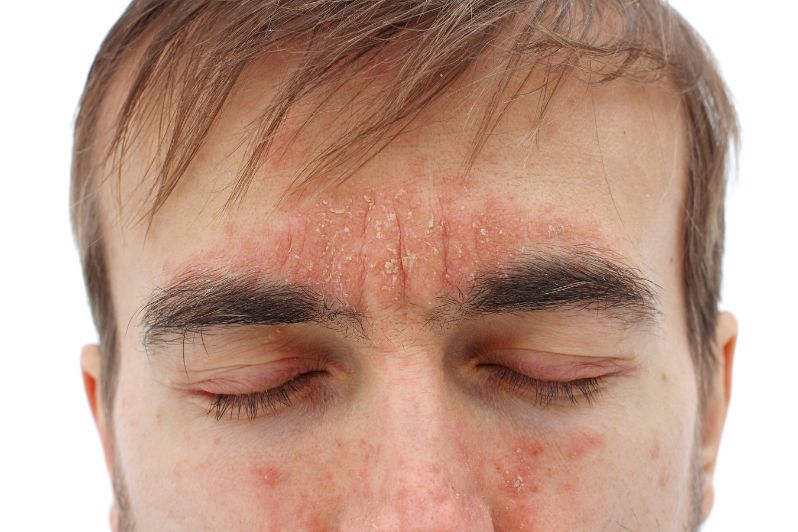
Image showing a man with peeling psoriasis
Skin conditions, particularly those causing itching and inflammation, can lead to eyebrow hair loss. Conditions such as eczema and contact dermatitis can lead to inflammation and irritation, weakening the eyebrow hair and potentially hindering hair growth. In addition, the habit of rubbing or scratching the area around the eyebrows due to these conditions can also contribute to hair loss.
Seborrheic dermatitis, another skin condition associated with a fungal infection or excessive oil production in the skin, can also contribute to eyebrow hair loss. This condition compromises the health of the skin surrounding the hair follicles, leading to hair loss. Understanding these skin conditions and their impact on eyebrow hair loss can help in developing effective treatment strategies.
Eczema and Psoriasis
Eczema and psoriasis, two common skin conditions, can contribute to eyebrow loss. These conditions disrupt the normal process of hair growth, leading to madarosis, the partial or complete loss of eyebrow hair. Eczema and psoriasis can lead to inflammation and skin irritation, which can adversely affect the hair follicles and result in hair loss.
Psoriasis, in particular, affects the eyebrows by causing an overproduction of skin cells, leading to scaly patches. These patches can obstruct the hair follicles, impeding normal hair development, and potentially leading to hair loss. However, effectively managing these conditions can help minimize the risk of permanent hair loss.
Seborrheic Dermatitis
Seborrheic Dermatitis is a common skin condition that affects oily regions of the body, including the eyebrows. This condition leads to uneven and scaly skin, possibly leading to dandruff-like flakes in the eyebrows and even hair loss.
The inflammation and irritation caused by Seborrheic Dermatitis can lead to excessive scratching and rubbing of the eyebrows. This can result in hair breakage and temporary hair loss. Yet, with appropriate care and treatment, Seborrheic Dermatitis symptoms can be kept under control, thereby preventing additional hair loss and encouraging hair regrowth.
Psychological factors such as chronic stress can also contribute to eyebrow hair loss. Chronic stress can disrupt the normal hair growth cycle by affecting the hair follicle stem cells, leading to hair loss. It’s no surprise that periods of high stress often correlate with increased hair loss.
Other psychological elements that contribute to eyebrow hair loss encompass conditions such as telogen effluvium and trichotillomania, which can be eyebrow hair loss caused factors. Telogen effluvium, often induced by stress or changes in the body’s metabolism, disrupts the hair growth cycle and causes increased hair shedding. Trichotillomania, on the other hand, is characterised by an uncontrollable compulsion to pull out hair, including eyebrows, leading to visible thinning and even bald spots.
Diagnosing eyebrow hair loss involves a comprehensive approach that includes a detailed medical history, a clinical examination, and possibly blood tests. It’s important to seek medical advice if you observe abrupt or unexplained hair loss in your eyebrows or any other part of the body.
A clinical examination for eyebrow hair loss involves:
- A thorough physical examination
- Review of medical history and symptoms
- Additional tests like a Complete Blood Count (CBC), Thyroid Function Tests, and checks for Iron levels may be conducted to identify any underlying causes
The aim is to pinpoint the primary cause of the hair loss to develop the right treatment plan.
Once the causes of eyebrow hair loss are identified, the next step is to explore the options for treatment, which can range from:
- Topical treatments
- Eyebrow serums
- Eyebrow growth oils
- Eyebrow pencils or powders
- Eyebrow micropigmentation
- Eyebrow transplants
Treatment selection for thinning hair generally hinges on the root cause of the hair loss, and occasionally, combining treatments may yield the most positive results.
Topical treatments like Latisse can aid in the regrowth of eyebrows by applying it to the brow area. For more severe or permanent hair loss, hair transplants or micropigmentation can provide a more substantial and enduring solution. Each treatment option comes with its advantages and potential drawbacks, and understanding these can help you make an informed decision.
Topical Treatments
Topical treatments such as minoxidil and bimatoprost are often the first line of treatment for eyebrow hair loss. These treatments are designed to stimulate hair regrowth by directly applying them to the eyebrows. Bimatoprost, for instance, is applied once daily to aid in the regrowth of eyebrows.
Minoxidil, on the other hand, is a widely acknowledged remedy for eyebrow hair loss. It has the potential to mitigate or halt hair loss, encourage the development of denser and more abundant eyebrows, and activate hair follicles. However, as with any treatment, it’s important to seek guidance from a medical professional.
Corticosteroids
Corticosteroids are another effective treatment option for eyebrow hair loss. These medications can slow hair loss and stimulate new hair growth, especially in cases of alopecia areata. Commonly used corticosteroids include:
- Triamcinolone acetonide
- Topical creams
- Gels
- Ointments
- Lotions
- Foams
Research indicates that the use of potent topical corticosteroids has resulted in a 25% improvement in regrowth for individuals experiencing eyebrow hair loss. Typically, individuals observe hair growth within a period of 4 weeks after commencing corticosteroid treatment for eyebrow hair loss.
Eyebrow Transplant
Hair transplant surgery offers a more enduring solution to eyebrow hair loss for individuals without ongoing untreated medical conditions. During an eyebrow transplant surgery, a hair transplant surgeon will extract hair follicles from the patient’s head and then transplant them to the eyebrows using small incisions.
Eyebrow Micropigmentation
Paul, an FTG Clinics client, shares his expereince and results after Eyebrow Micropigmentation
Eyebrow micropigmentation is a semi-permanent makeup procedure that involves the use of a digital device equipped with specialist needles that implant pigment into the skin, resulting in the creation of natural-looking hair strokes in the eyebrow area. This technique can significantly enhance the appearance of thinning eyebrows, providing a more natural and fuller look, or complete eyebrow restoration for those with total hair loss.
For those who prefer natural remedies and alternative therapies, there are several options to consider. Natural treatments such as castor oil and acupuncture are often selected for natural restoration of eyebrow hair. These treatments, coupled with nutritional supplements containing hair-boosting nutrients like iron, vitamin D, folate, vitamin B12, selenium, pumpkin seed oil, zinc, vitamin E, and omega fatty acids, can help prevent eyebrow hair loss and promote overall hair health.
Acupuncture, in particular, has been shown to mitigate hair loss in individuals with conditions such as alopecia areata and seborrheic alopecia, making it a compelling choice for individuals exploring alternative remedies to treat alopecia areata, especially for eyebrow hair loss. While these natural remedies and alternative therapies can be beneficial, it’s important to remember that they are most effective when used in combination with a balanced diet and healthy lifestyle habits.
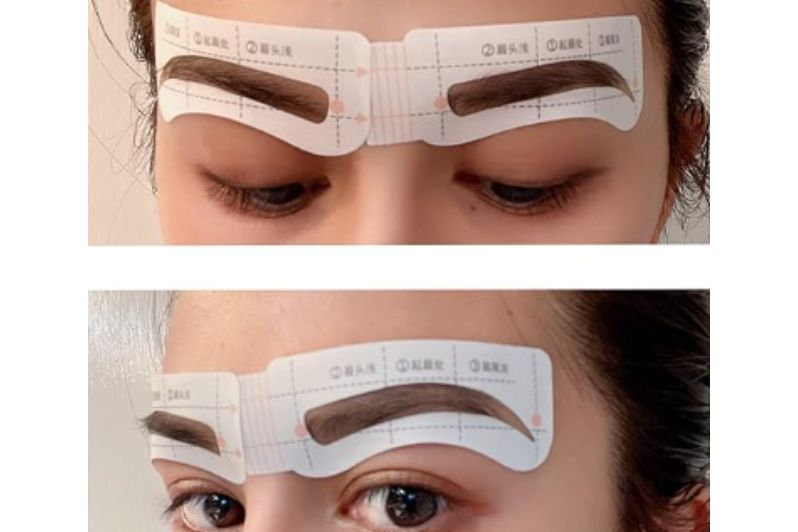
Image showing a lady applying eyebrow stencils
Alongside medical treatments and natural remedies that promote hair regrowth, there are also methods to amplify the look of thinning eyebrows during the interim. Some options include:
- Makeup: Using eyebrow pencils, powders, or gels to fill in sparse areas and create the illusion of fuller eyebrows.
- Henna Brows: A semi-permanent technique that creates hair-like strokes to shape and fill in eyebrows.
- Eyebrow stencils: Reusable, self-adhesive stencils
- Hair dye: Tinting the eyebrows with a colour that matches the natural hair color to make them appear fuller and more defined.
These methods can provide temporary solutions while waiting for hair regrowth.
Summary
Eyebrow hair loss is a common concern that many individuals face. However, understanding the causes and effective solutions can empower you to take control and restore your brows to their former glory. From autoimmune disorders, hormonal imbalances, and certain medications to skin conditions, nutritional factors, and psychological stress, there are numerous potential triggers for eyebrow hair loss.
But the good news is that there are also numerous treatment options available, ranging from topical treatments and corticosteroids to hair transplants, microblading, and natural remedies. The key is to identify the underlying cause of the eyebrow hair loss, take appropriate steps to address it, and be patient as hair regrowth can take time. Remember, eyebrow hair loss is not a condition to be ashamed of, but an opportunity to take charge of your health and well-being.
How do I know if my eyebrow hair loss is temporary or permanent?
The permanence of eyebrow hair loss depends on the underlying cause. If the hair follicles are intact, the loss is likely temporary. However, if there is scarring or damage to the follicles, it may be permanent. A dermatologist can help assess the condition of the follicles.
Is there a genetic component to eyebrow hair loss?
Yes, genetics can play a role in eyebrow hair loss. If your family has a history of hair loss, including eyebrows, you may be more predisposed to experiencing it as well.
Can over-plucking lead to permanent eyebrow hair loss?
Excessive plucking can damage the hair follicles and potentially lead to permanent hair loss if done over an extended period. It's important to pluck eyebrows moderately to avoid this
Can stress cause eyebrow hair loss?
Yes, stress can be a cause of eyebrow hair loss. Chronic stress affects the hair follicle stem cells and can disrupt the normal hair growth cycle
Sources
Gupta AK, et al. (2014). 5% Minoxidil: treatmentfor female pattern hair loss.
https://www.ncbi.nlm.nih.gov/pubmed/25807073
Ranabir S, et al. (2011). Stress and hormones.
https://www.ncbi.nlm.nih.gov/pmc/articles/PMC3079864/
Kumar A & and Karthikeyan, K (2012) Madarosis: A Marker of Many Maladies
https://www.ncbi.nlm.nih.gov/pmc/articles/PMC3358936/
Trichotillomania. (2017).
https://rarediseases.org/rare-diseases/trichotillomania/
Plemel, D et al. 2023 American Academy of Ophthalmology. Madarosis https://eyewiki.org/Madarosis


Article author Dawn Forshaw — Published on 1st March 2024
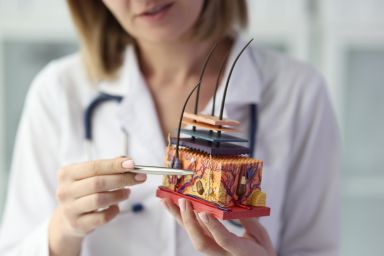
Does Scalp Micropigmentation Damage Hair Follicles?

Can You Use Minoxidil with Scalp Micropigmentation?
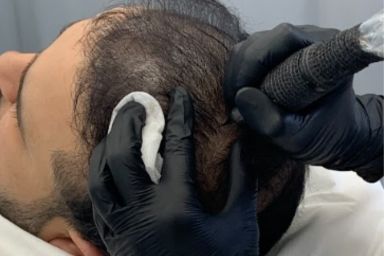
Combining Scalp Micropigmentation and Hair Transplants: The Ultimate Hair Loss Solution
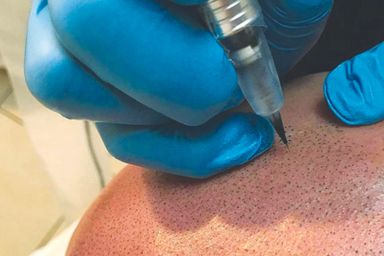
Scalp Micropigmentation Fading: A Comprehensive Guide

Botched Scalp Micropigmentation Treatment: What Are Your Options?
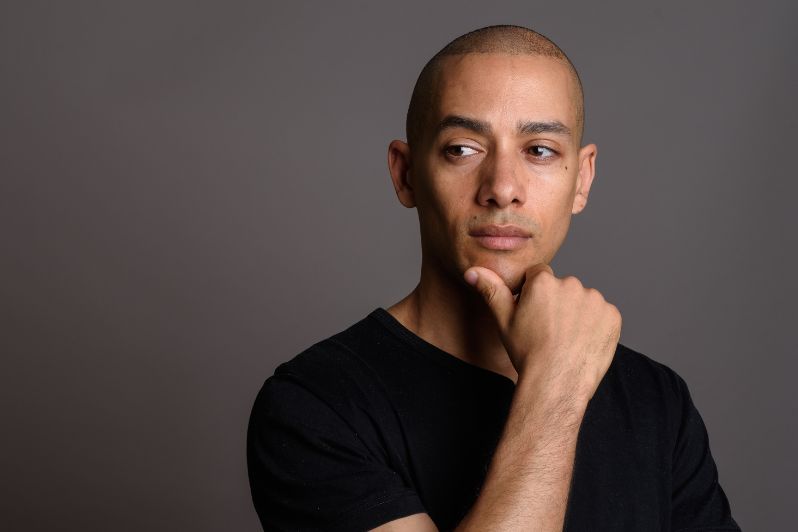
Is Scalp Micropigmentation Permanent?

Paul's Transformation: Navigating Alopecia Universalis with Eyebrow & Scalp Micropigmentation
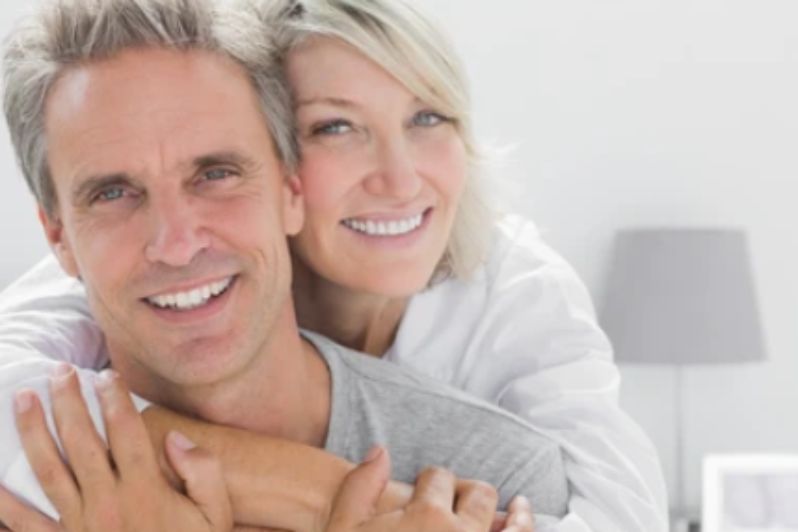
Scalp Micropigmentation: A Solution for Blonde & Fair Hair (Men & Women)
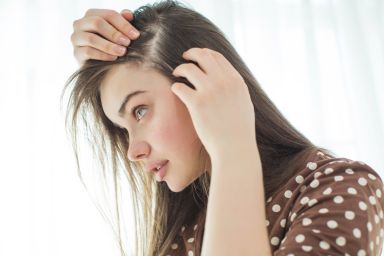
Female Temple Hair Loss: Causes, Prevention & Treatment
- Choosing a selection results in a full page refresh.
- Press the space key then arrow keys to make a selection.

